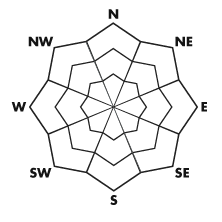


| Advisory: Salt Lake Area Mountains | Issued by Drew Hardesty for March 30, 2013 - 6:24am |
|---|
























 
Above 9,500 ft.
8,000-9,500 ft.
Below 8,000 ft.
|
bottom line A mostly Low danger this morning will rapidly rise to MODERATE WITH POCKETS OF CONSIDERABLE with daytime heating. Natural and human triggered slides will become likely during the heat of the day. Again, the Bottom line is to get off of and out from underneath steeper slopes by the time they've become wet, unconsolidated and unstable (and not limited to the sunny aspects). The danger may be more pronounced in the Park City, Ogden, and Provo area mountains as they've suffered warmer temps over the last three days...
|
 |
special announcement iPhone & iPad users: With help from Backcountry.com & Garafa, LLC, we now have a free mobile app that combines the best of the UAC advisories, observations, and weather summaries with National Weather Service products & UDOT road updates. This puts the tools you need for planning your day and your run in one handy mobile package. Check it out, tell your friends, and let us know what you think. http://utahavalanchecenter.org/apps
|
 |
current conditions Well it's a sign of spring when there are more cars at the Gate Buttress for rock climbing in Little Cottonwood Canyon than at the backcountry trailheads. It's also a sign of spring when there are tons of surveys and blog entries from us at the UAC -
Skies are clear to partly cloudy with similar overnight lows in the upper 20s to low 30s. Well noted are the well-above freezing temps (upper 30s to low 40s) below roughly 8500' in the Park City, Ogden, and Provo area mountains for the 3rd night in a row. Winds are generally light and westerly. The last vestiges of leftover dense powder can still be found on straight north above 10,000'; otherwise it's a collection of quasi-corn, breakable crust, mashed potatoes and isothermal snow.
|
 |
recent activity No significant activity reported yesterday except for some larger rollerballs and a few wet sluffs on steep slopes as they heated up. More glide cracks are appearing as well. There were not many people in the backcountry yesterday. |
| type | aspect/elevation | characteristics |
|---|---|
 |
























 
Above 9,500 ft.
8,000-9,500 ft.
Below 8,000 ft.
|
|
|
description
It's the 3rd night in a row of a poor refreeze in the Park City, Provo, and Ogden area mountains below about 8500'. To be sure, clear skies will foster a superficial refreeze due to long-wave radiational cooling, but it'll be a wolf-in-sheep's-clothing. Many areas are still transitioning from a winter to spring snowpack...and can tend to produce wet slides while the plumbing and piping sorts its self out in the snowpack to allow for the free water to work its way out and not pool along layers and interfaces. A spike in water flow is forecasted for some streams by the Colorado River Basin Forecast Center. (They are co-located with us at the National Weather Service downtown.) Mark Saurer, part of the Park City Mountain Resort snow safety, put together one of the more interesting research papers in awhile and presented his findings last September in Anchorage. He was looking at the correlation between forecasted spikes in water flows along the creeks and drainages with wet avalanche activity in the mountains.
|